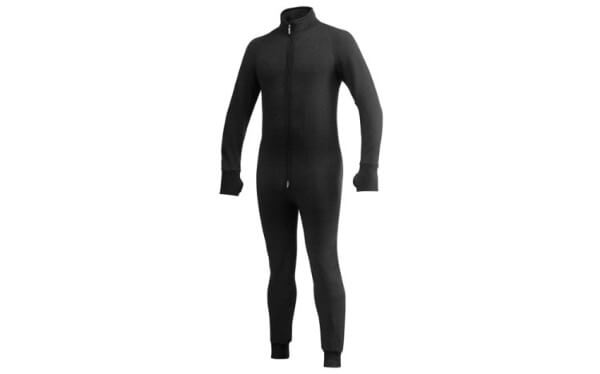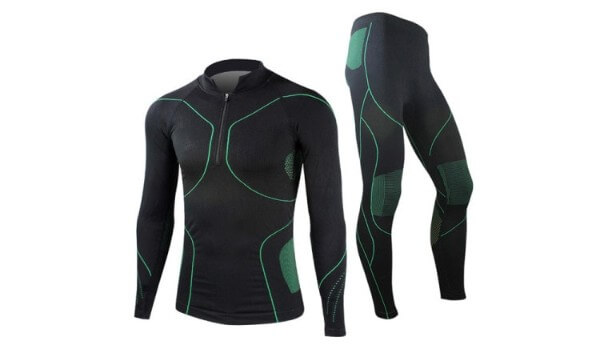Winter is not far and it is about to freeze. If so, it’s time to think about warm clothing and special thermal underwear. When you buy thermal underwear, you want performance, durability, and comfort under any circumstances. You don’t want to skimp on it.
Adding a layer of thermal underwear to your winter outfit can make all the difference. This extra warmth—usually found in the form of insulated leggings or a thin, insulated shirt—is meant to be worn under the outer layer.
Flaky clothing – This is the best way to protect yourself from severe cold and strong wind. If everything is done correctly – you will smile even in a snowstorm, instead of repenting of the time spent with the cold at home. Today we will talk about thermal underwear, or study the question – of how to choose thermal underwear for a person who actively likes to spend time in the fresh cool air. let’s go!
All clothing can be divided into three layers: the base layer, the insulation layer, and the protective outer layer. Underwear, T-shirts, or thermal underwear is considered the base layer, which is directly adjacent to the body. Strange as it may sound, men often neglect the importance of a base layer. Use the wrong materials without thinking, expect the protection and desired warmth of a thin shirt. I will try to present a weighty argument in favor of a responsible approach to the choice of the base layer, especially thermally.
Tips To Choose Men’s Best Quality Thermal Wear
Read More: Coolest & Stylish Winter Outerwear Trends For Men
Types Of Fabric For Thermal Under Wear:
On sale, you can find three standard types of fabric for thermal underwear. They all have their advantages and disadvantages.
Synthetic Thermal Under Wear
When it comes to cold weather, synthetic is the gold standard for harsh winter conditions. Often a unique combination of polyester, nylon, spandex, and Lycra achieves the perfect balance for moisture removal and heat retention, which is beyond any other combination of materials.

By the way, you noticed that I wrote, “Diverts moisture and keeps warm.” The thing is that the underwear regulates the removal of moisture from the body rather than warming it. At best, a little warmth can be provided by woolen underwear. About it later. All the rest of the underwear – removes moisture, no.
Woolen Thermal Under Wear
Wool is created by nature itself to perfectly dissipate moisture and keep warm. Difficult to obtain and expensive, it has been used for hundreds of years, protecting researchers, travelers, soldiers, and hunters from the cold. However, wool has a disadvantage – many people do not like it when it comes into contact with the skin. Rashes, itchiness, and irritation can result from such close contact, especially when you are active in the cold.

Cotton Thermal Under Wear
Cotton is a very cheap material (not counting bad synthetics) and is abundant. This is VERY bad, as cold air and accumulated moisture lead to a rapid loss of heat. Cotton is useful as a base layer when you are going outdoors, but do not plan serious activity (for example, when you go shopping in a neighboring store or spend no more than a couple of hours outdoors). In this case, cotton will create an air cushion from the warm air, but no more than that.

Pay Attention To Moisture Removal
The main purpose of wearing thermal white is to keep warm. To stay warm, you need to stay dry. Moisture transmits or takes away the temperature very well, keep this in mind.
As your body heats up, it tries to adjust the temperature, which is reflected in the sweat. Under normal conditions this is good – evaporation removes heat from the skin surface, cooling it down. When you are dressed, it becomes a problem if the fabric is not water repellent.
Too much moisture in contact with cold air leads to accelerated heat loss and/or impregnation of the fabric, resulting in loss of its insulation properties. This again leads to a loss of heat.
You want thermal underwear that effectively removes moisture from the middle layer (jeans, sweatshirt, turtleneck, etc.). Synthetics and wool do this; cotton dissipates heat badly.
How Thin A Layer Will Keep Warm
The secret is in the air layer in the fabric fibers.
Aloft is a low-density fabric that guarantees that the fabric will retain its shape and hold the air. It warms while remaining free and light – an important quality for those who pay attention to the weight of clothing.
Read More: Autumn-Winter Wardrobe Essentials for Men
Types Of thermal Under Wear
In addition to the types of fabric for thermal underwear, there are also different types of thermal wear. About them and we will talk more below.
Thermal Under Wear For Extreme Cold
Have you ever had to rest or scuba dive at the North Pole? If so, you have definitely worn thermal underwear for extreme conditions.

Advantages:
- Repels moisture.
- Perfect fit – designed to fit the width of the opening and low waist. Completely covers the torso and limbs, which facilitates movement.
- Solid design – protects the middle of the body, and you do not need to buy separately the top and bottom.
- Absolute protection – protects your wrist and ankles.
- Provides protection in an average and extreme cold – from moderate temperatures to extremely low (to -40-45 degrees Celsius – with other layers).
- Resists bacteria – can be worn for weeks (for hunters, tourists, military).
- It can be used in a wide range of conditions – diving, winter fishing, climbing, and hunting in the far north.
Disadvantages:
- The high cost (100-300 dollars).
- The whole design fits only those who need the protection of both the top and bottom.
- Not suitable for temperatures above 10 degrees Celsius, it should be removed if the temperature rises.
- Made of thick fabric, it will fit the body but add weight.
- Can cling to clothes – although the latest models have a smooth surface.
Thermal Under Wear For Activity Or Extreme Sports
If you are snowboarding or skiing on the mountain slopes, you need thermal underwear for active sports. It is much more convenient and practical than models for extreme cold as it is lighter and made of more pleasant-to-the-touch materials.

Advantages:
- Repels moisture
- Perfect fit – designed to fit the width of the opening and low waist. Completely covers the torso and limbs, which facilitates movement.
- Does not cling to clothing and is designed to be worn under clothing or uniform.
- Provides easy and average protection against cold – from moderate temperatures to low (up to 0-10 degrees Celsius).
- Interesting design and colors.
Disadvantages:
- High cost – 30-100 dollars separately for the top or bottom.
- Not suitable for use in low temperatures (below -12 degrees).
- May not be suitable for long-wearing (more than 24 hours) due to its skinny design.
- The top and bottom kit alone does not always protect the middle, wrists, and ankles.
Tip for those who want to save money – pay attention to not very promoted brands in your hypermarkets – if you know what the fabric is made of, you can find things similar in quality by 2/3 cheaper. Even better, be poisoned in inexpensive sports shops, where you can still buy sleds or wooden skis from Soviet times. That’s the power of knowledge!
Inexpensive Synthetic Cotton Under Wear
It should be recognized that not everyone can afford to buy thermal underwear for the season (that’s how much it usually suffices), so some manufacturers introduce into their product line products series “economy”. Such thermal underwear is quite suitable for outdoor work or for a child to play in the yard. However, it is better than a normal cotton shirt.

Advantages:
- Low cost.
- Can repel moisture.
- Provides easy protection – suitable for temperatures from 0 to 10 degrees.
Disadvantages:
- Not suitable for long-term protection against cold.
- Provides minimum protection in extreme temperatures (below -12 degrees).
- They do not sit well, which leads to overheating, irritation and discomfort.
Cotton Underwear
So we came up to our usual cotton shirt or T-shirt, which, although bad, protects us from the cold.

Advantages:
- Low cost.
- Provides easy protection – suitable for temperatures from 0 to 10 degrees.
Disadvantages:
- Not suitable for prolonged wear at low temperatures.
- Not suitable for long-term protection against cold.
- Provides minimal protection in winter and absorbs moisture, which leads to cooling of the body due to increased sweating.
- It does not fit well, which leads to overheating, irritation and discomfort.
Today we have only analyzed the basic differences between the different types of thermal underwear. This article should help you figure out how to choose thermal underwear for a man, woman, or your child so that you don’t get cold this winter. In one way or another, as well as any underwear, you will feel comfort or discomfort, only after a while after wearing, so we did not recommend a specific manufacturer. Try on the thermal underwear before you buy it if it will allow the seller and you will be able to appreciate the sensation of the fabric.
You’ll Also Like:
- Useful Tips On Winter Clothing Care
- Let’s Fall This Fall For These Stylish Coats
- Men’s Navy Blue Blazer: Wear With Fashion
- How To Choose A Coat: Men’s Style Guide
- Tips to Style Men’s Sports Jacket







































